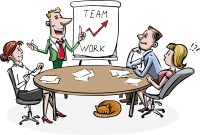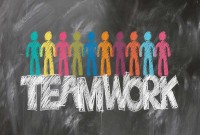- Home
- Business Processes
- Industry Knowledge
- Aerospace Industry
- Automotive Industry
- Banking Domain
- BFSI Industry
- Consumer/ FMCG Industry
- Chemicals Industry
- Engineering & Construction
- Energy Industry
- Education Domain
- Finance Domain
- Hospitality Domain
- Healthcare Industry
- Insurance Domain
- Retail Industry
- Travel and Tourism Domain
- Telecom Industry
- Leadership Skills
- eLearning
- Home
- Leadership Skills
- Project Leadership
- What is Project Management
What is Project Management
Are you leading or involved in projects that are critical to your business or your team or your organization? What are the challenges you face while managing these projects? Do you feel yourself to be in control of the project and are able to track all deliverables to get successfully completed by the deadline? Do you have methodologies, clear processes, and systems in place to manage your projects? Are your projects able to meet the business objectives they intended to achieve?
This section of our website is targeted at individuals who manage projects as a primary function of their work. Continue with these tutorials to gain an operational understanding of the basic concepts and tools of project management as well as advanced tools to manage the real-world challenges you will face. We will start with the basic concepts and tools and slowly move to advanced topics improving your project management skills.
We will address the core concepts behind “Project Management” and help you navigate through the real-world challenges and troubleshoot problems that may be affecting your project team’s performance and work. We will give you tools to deal with miscommunications, conflicts, or sagging loyalties that get in the way of high performance. We will also give you an opportunity and toolkit to put those concepts into practice during the learning sessions.
Some of the objectives that we have tried to address while creating these tutorials are:
1. Exposure to real business projects with high business impact
2. How to create a well-defined project with clear deliverables
3. Tools and concepts behind defining project scope, detailed guidelines
4. Moving from theoretical concepts to a great learning experience
5. Short and precise structured course output
6. Exposure to best practices and good use of project management tools
7. How to leverage very good teamwork during projects
8. How to ensure the impact of the project on pre-defined business objectives?
9. Ensuring that the participant learn & apply project management tools & techniques
10. Time & commitment impact – for the participant, you and for your team
11. Impact of learning on your role - does participant is able to apply some of the skills & knowledge learned on actual job
12. Developing people and ensuring the learning has an impact on the performance
13. Help participants better understand the strategy & challenges of their own businesses
14. Tools to make people aware of cultural differences between geographies/businesses
15. Enhancing the ability to see the big picture
16. Increased hands-on knowledge & understanding of other functions within the organization
17. Understand the power of best practice sharing - “participant will start looking for connection within the business before doing things by himself”
18. International best practices that can be applied in business projects
19. Guidance on applying tools & knowledge
20. Increased self-confidence - “Participant is now able to voice her opinion & challenge others in the meeting. He/She drives project more proactively”
21. An eye-opener on a variety of career paths “participant is realizing there are other options available for them than a current role for her next move”
22. Noticeable improvement in leadership skills
23. The participant is using the new network to get fresh ideas/advice
24. The project gave visibility & exposure to the participant
25. Developing presentation skills
26. Tools to evaluate what can be done differently
27. Practical, real-world project management examples (Customer Focus)
28. Career Benefits - More & wider responsibilities within the same department; New role (lateral move, promotion); Move to the management role
29. Make participants aware that the higher they go, the more they will have to work on things in parallel
30. How do you manage everything; how do you set priorities, resources, etc.?
31. Prepare participants for bigger roles; How to deal with uncertainty?
32. Other areas of development - Teamwork … collaboration…
Related Links
You May Also Like
-
Collaborative leadership is all about collaborative problem-solving and decision-making or can also be defined as the leadership of a collaborative effort. . The term started to appear in the mid-1990s in response to the formation of long term public-private partnerships to rebuild public infrastructure. Learn how you can use principles of collaborative leadership to enhance your leadership skills for being an effective leader.
-
Four main areas in an organization that need special focus when we discuss the change in an organizational setup are organizational structure, technology, work environment, and the people. Some people call it a process, system, and people. Change in an organization includes adapting to change, controlling change, and effecting change.
-
Many people think communication is easy. It is said that communication can never be a hundred percent complete. Many factors are involved in the process of communication and something can always go wrong with one or more of these. It becomes difficult and complex when we put barriers in communication. Recognize barriers to interpersonal communication and examine specific strategies for overcoming those barriers.
-
Leadership has been defined in different ways by different sets of scholars. In very simple terms leadership can be defined as the skill of a person to influence an individual or a group for achievement of a goal in a given situation. One can use different dimensions and perspectives to define leadership. Through the evolution of leadership thought, leadership has been defined in various ways discussed here.
-
Charles Darwin had once commented that “It is not the strongest or the most intelligent who will survive but those who can best manage change.” Agility means the capability of rapidly and efficiently adapting to changes and recently, agility has been applied in the context of software development, agile enterprise, and agile leadership. Agile leaders play an important, even essential, role in scaling agility in an organization. Understand how being an agile leader helps in effectively catalyzing organizational change.
-
Building Perfect Creative Team
One misconception around creativity is that creative act is essentially solitary. Most of the world's important inventions resulted not from the work of one lone genius, but from collaboration of a team with complementary skills. Managers should build teams with the ideal mix of traits to form a creative group and then establish the conditions that make creativity much more likely to occur.
-
Teams are part of the modern organizational culture. Whether you are a team leader or a team member, having a better understanding of how teams work, and being able to identify where the team is in the process, is a critical part of ensuring the team is ultimately successful. Start with the basics and understand what a team is and what role they play in an organization.
-
Reasons behind Wastage of Time
Under-utilization of time may be due to the faulty system or faults of manager/officer/leader or due to lack of planning. There could be many factors driving the procrastination behavior like system issues, personal work habits, and lack of delegation, personality traits, and bad working habits of the leader, failure to tackle interpersonal conflicts, obstacles, and lack of far-sightedness.
-
Generating Ideas using SCAMPER
SCAMPER is an activity-based thinking process that can be performed by Cooperative learning. SCAMPER is an acronym that provides a structured way of assisting students to think out of the box and enhance their knowledge. This can be used in the organizational context as a technique for creative problem solving and as a toolkit to generate fresh ideas.
-
Storming Stage of Team Development
Storming is the second stage of team development and this stage is characterized by a bid for power and inter-personal conflicts. Learn the key factors that occur in the storming stage and the strategies that a team leader can adopt to pass this stage of high winds
-
Understanding Corporate Strategy
Management outlook and procedures have been revolutionized by more and more innovations over the recent years. It is no longer possible to follow traditional approaches to develop your organization's direction, its management as well its effectiveness. Senior managers need to be good decision-makers. In this section, we introduce concepts for strategy, strategic planning, strategic leadership, their exact meaning and associated terms, and how to use them.
-
Facilitative Leadership is all about involving the employees in the decision-making process at all levels enhancing their sense of ownership, responsibility, and motivation. Facilitative leadership style uses a number of indirect communication patterns to help the group reach consensus and build commitment for the decision taken. To be effective in modern organizations, managers need to become facilitative leaders, learn what it means to be a one.
-
David Kolb produced this popular model for learning in 1984. The model suggests four stages of learning which most learners go through in order to learn effectively. Leaming is itself a process of change. Something is added to our perception and prepared us for the next impression, which will change our understanding yet more, however minutely. The Kolb contribution is a significant one because it practically equates change and learning.
-
Have you ever resonated that there seem to be as many different ways to lead people as there have been great leaders? When we recall the success of Mahatma Gandhi, Nelson Mandela, Abraham Lincoln, Napoleon Bonaparte to Steve Jobs and Jack Welch, we also notice that they all used different approaches that were suitable to their specific situations and circumstances. Over the last century, researchers and psychologists have developed simple ways to describe the “Styles of leadership” and in this section, we will explore these commonly known leadership styles.
-
Effective Business Communication
Communication is all about getting the message across correctly. To make this happen, you need to have good speaking skills and good writing skills. If you have these skills coupled with good listening skills and interest in reading, you have all the potential to be a good communicator. What things should the leader take into consideration to be more effective with interpersonal communication?
Explore Our Free Training Articles or
Sign Up to Start With Our eLearning Courses

About Us
Learning
© 2023 TechnoFunc, All Rights Reserved















